Chaintech 4SLE Motherboard - Part 3
6th July 2021
Welcome to Part 3 of my review of the Chaintech 4SLE Socket 3 VESA Local Bus motherboard! In Part 2 we explored the performance of it by running three of my 5-volt Socket 3 CPUs: an Intel 486DX-33, an Intel 486DX2-66 and a UMC U5-S-40, and changing some of the chipset settings.
Now it's time to address that missing voltage regulator. My board revision is a little older than most of those I've seen pictures of on the internet, and it has a 3-pin regulator socket, not a 4-pin. It is of no real concern though - this will suit a standard 3-pin regulator. The most important thing to note is that it should be an LDO ("Low Dropout") linear voltage type.
Step 1 is to identify what each of those 3 pins on the board actually does. To do so, I will use some wires and my multimeter to check the voltage levels at each pin. The motherboard is currently configured to send 5V to the CPU socket, and my assumption is that these 3 pins take the 5V and ground from the main 5V rail so we should have at least a 5V and a GND, and maybe the third wire also showing 0V at this time because there is no regulator:
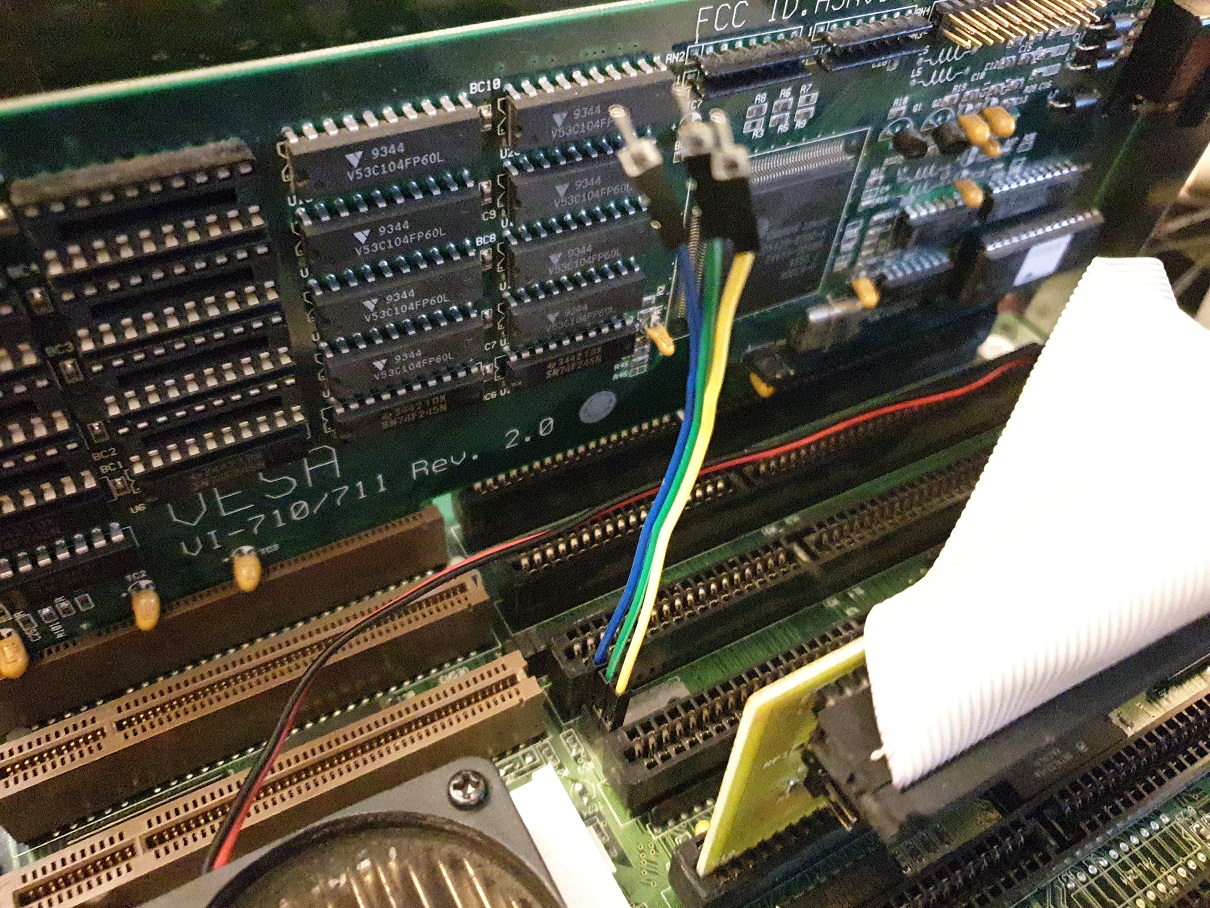
One wire for each - I'm calling blue 'pin 1'
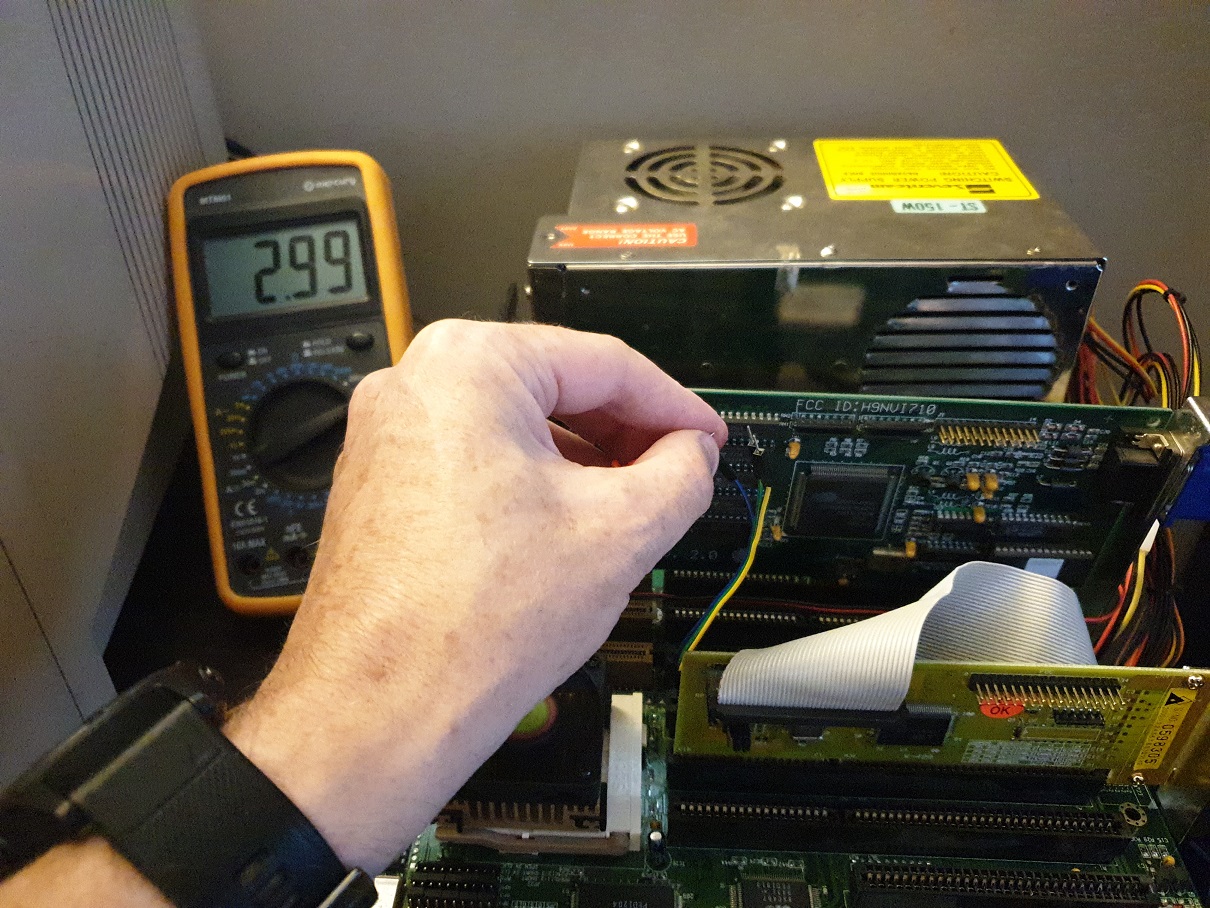
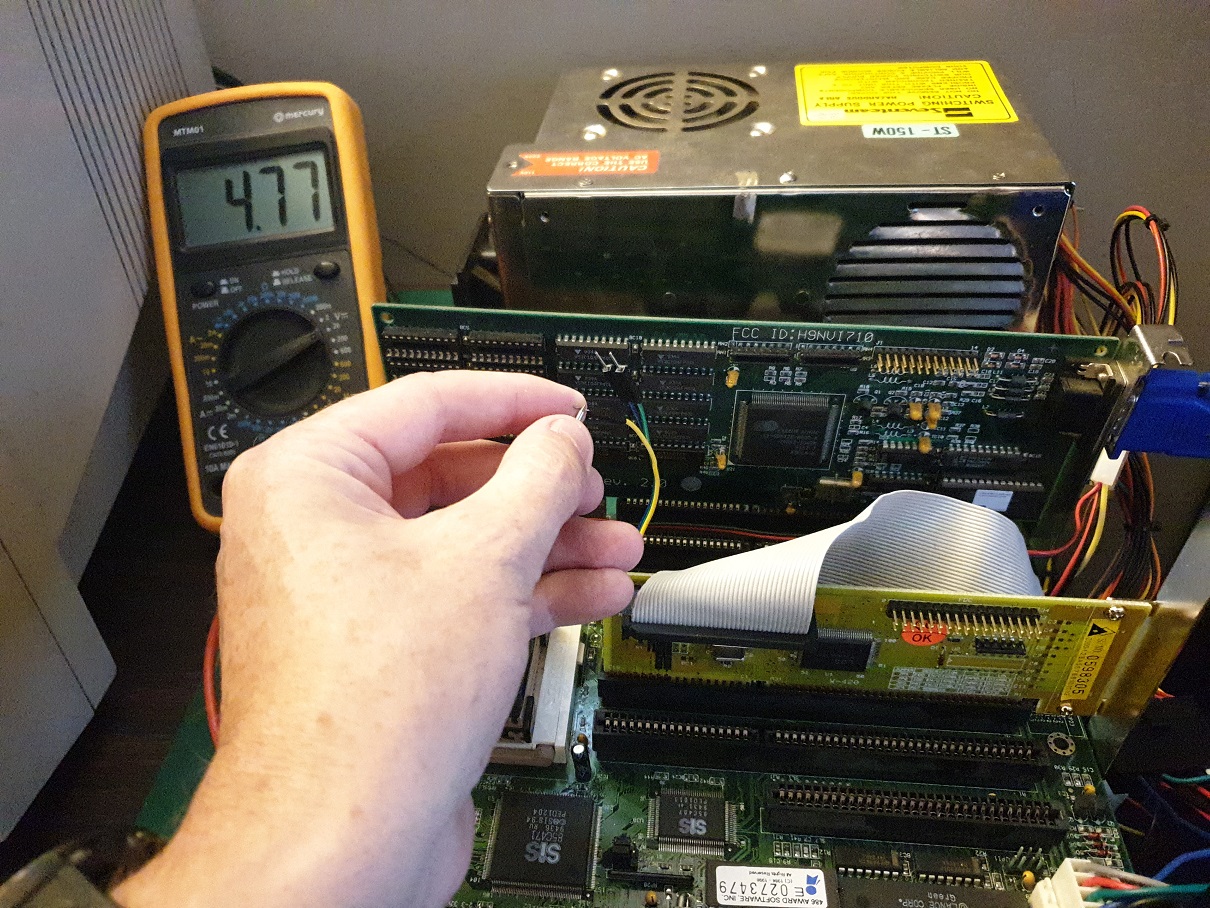
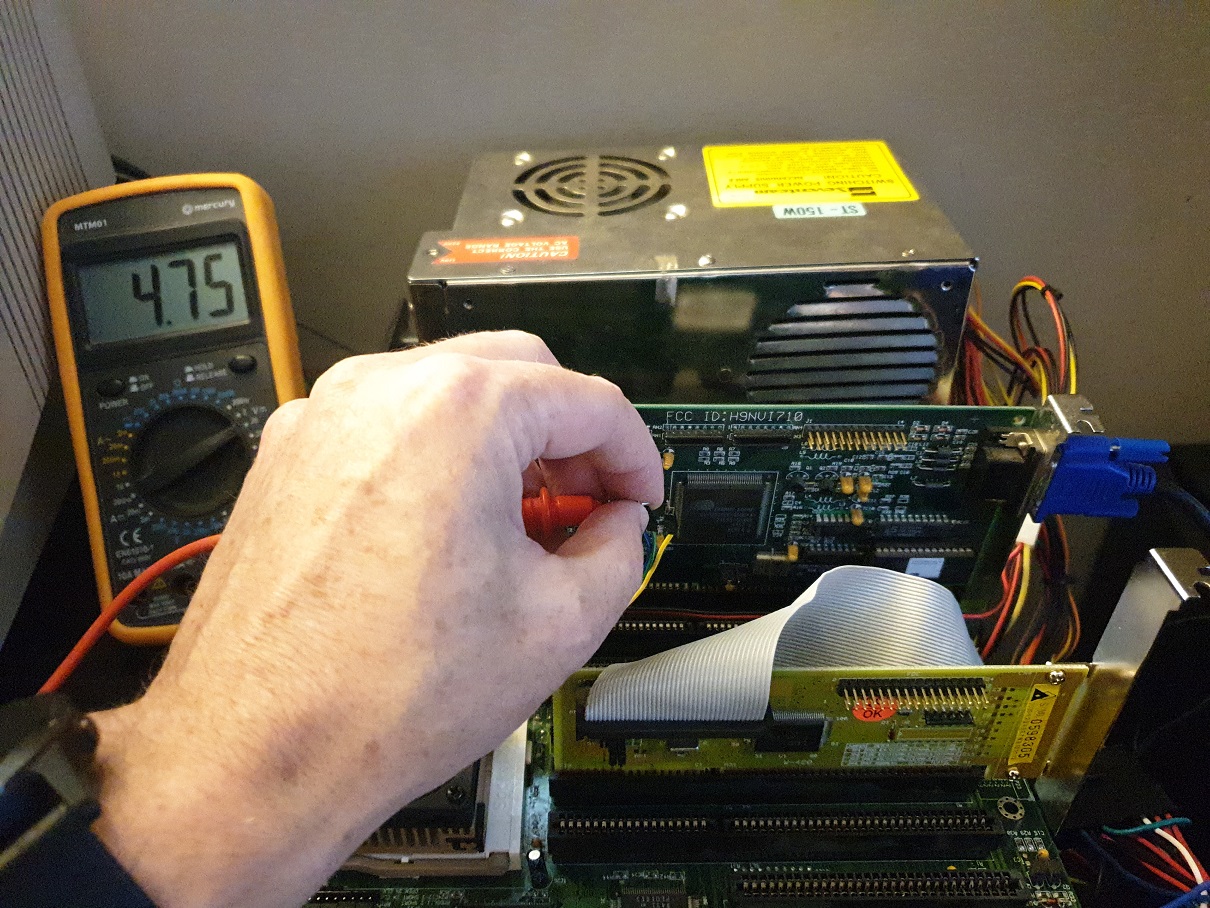
Hmm... so pin 1 is 3V, pins 2 and 3 are 5V - how are we getting 3V without a regulator?...
I was expecting 0V at pin 1 as this should be GND. But okay... this is with the board jumpers configured for a 5V CPU. Let's take the CPU out and set the board up for 3.3V, and re-check:
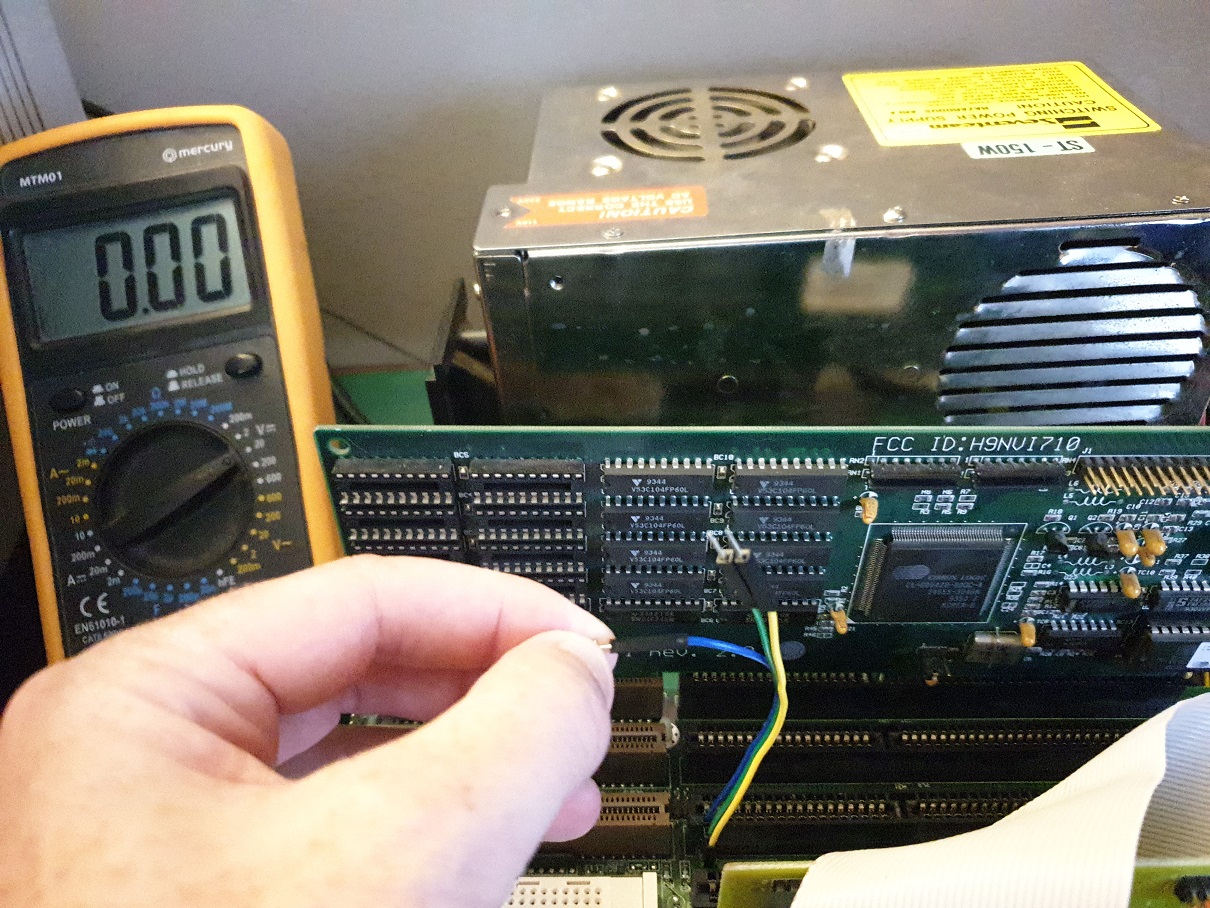
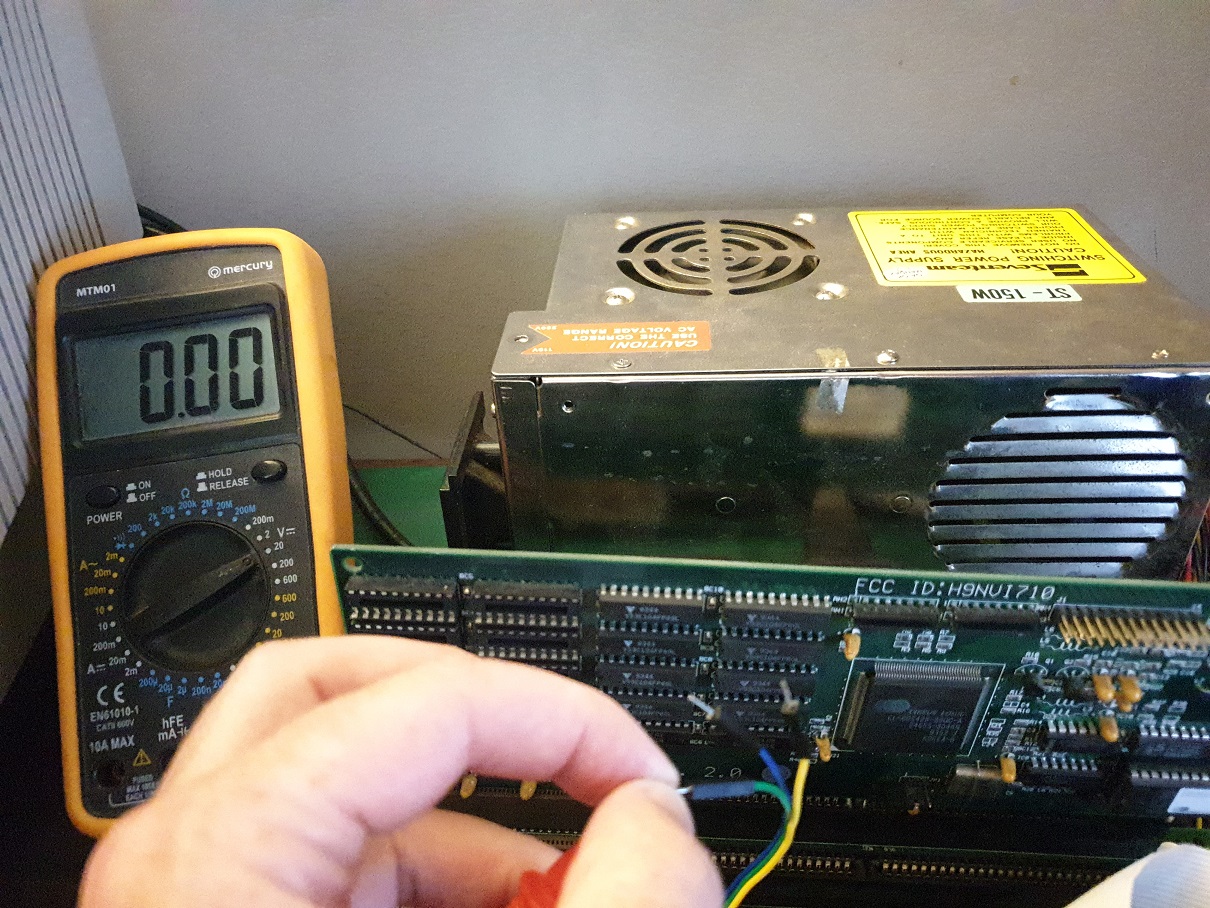
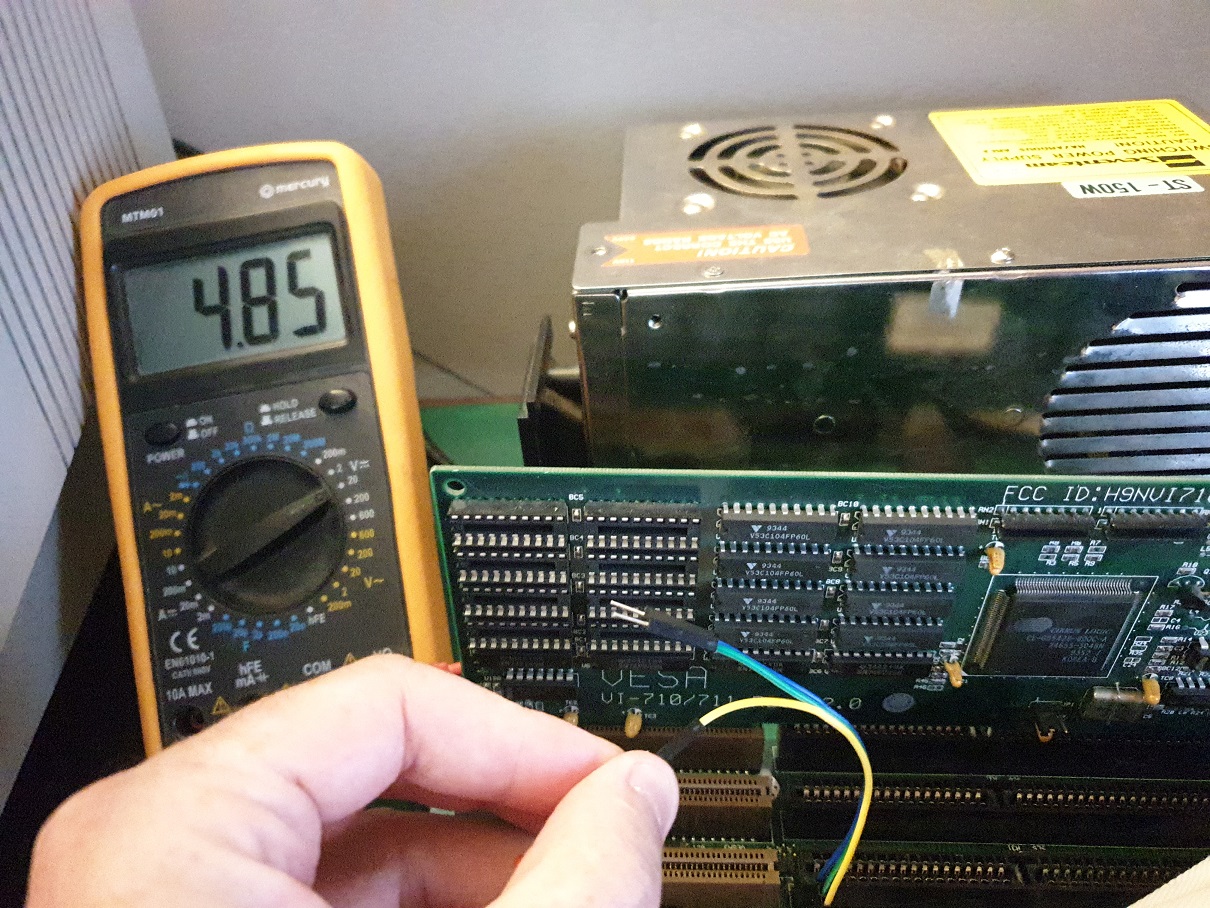
So now we have pins 1 and 2 to GND and pin 3 is providing 5V.
Testing the voltage at socket pin A4 (Vcc) will tell us what is being fed to the CPU:
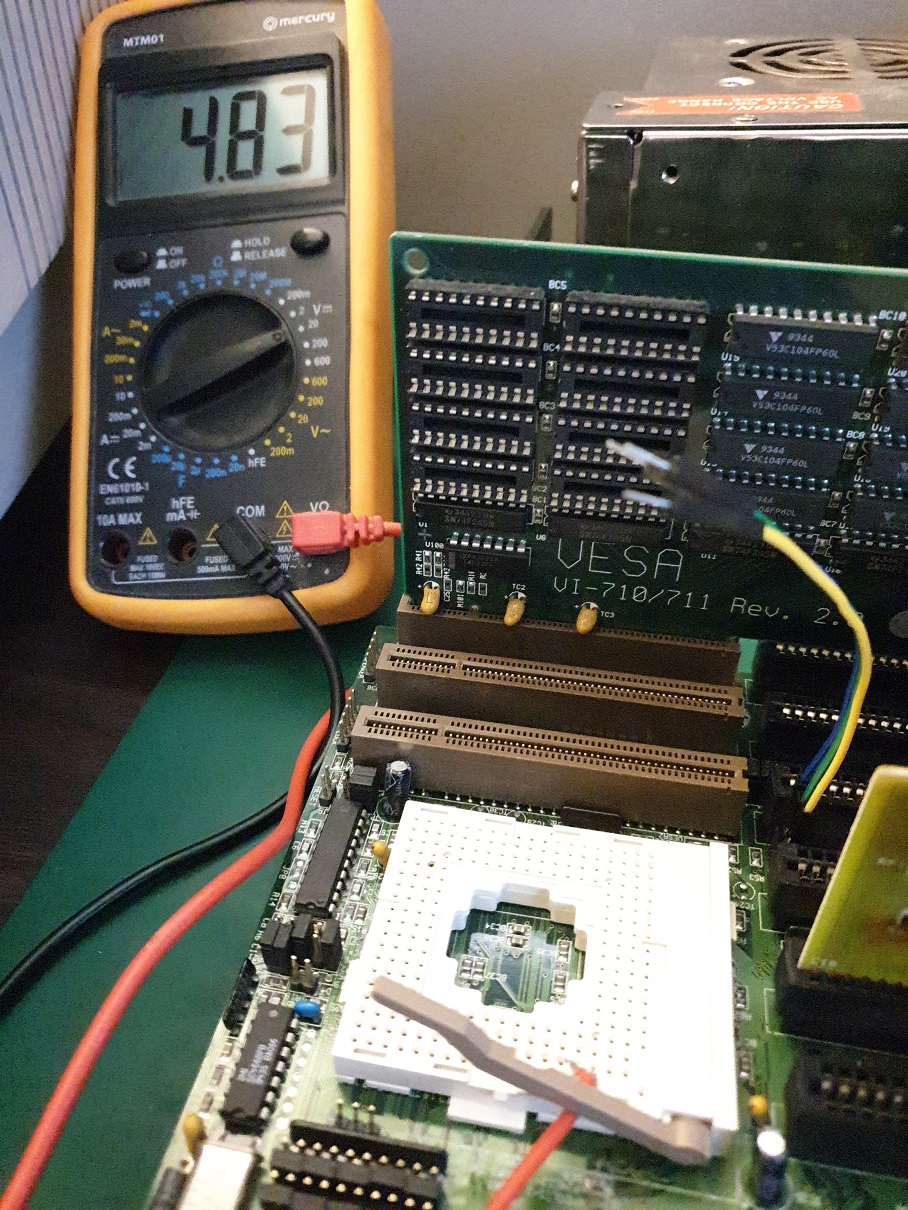
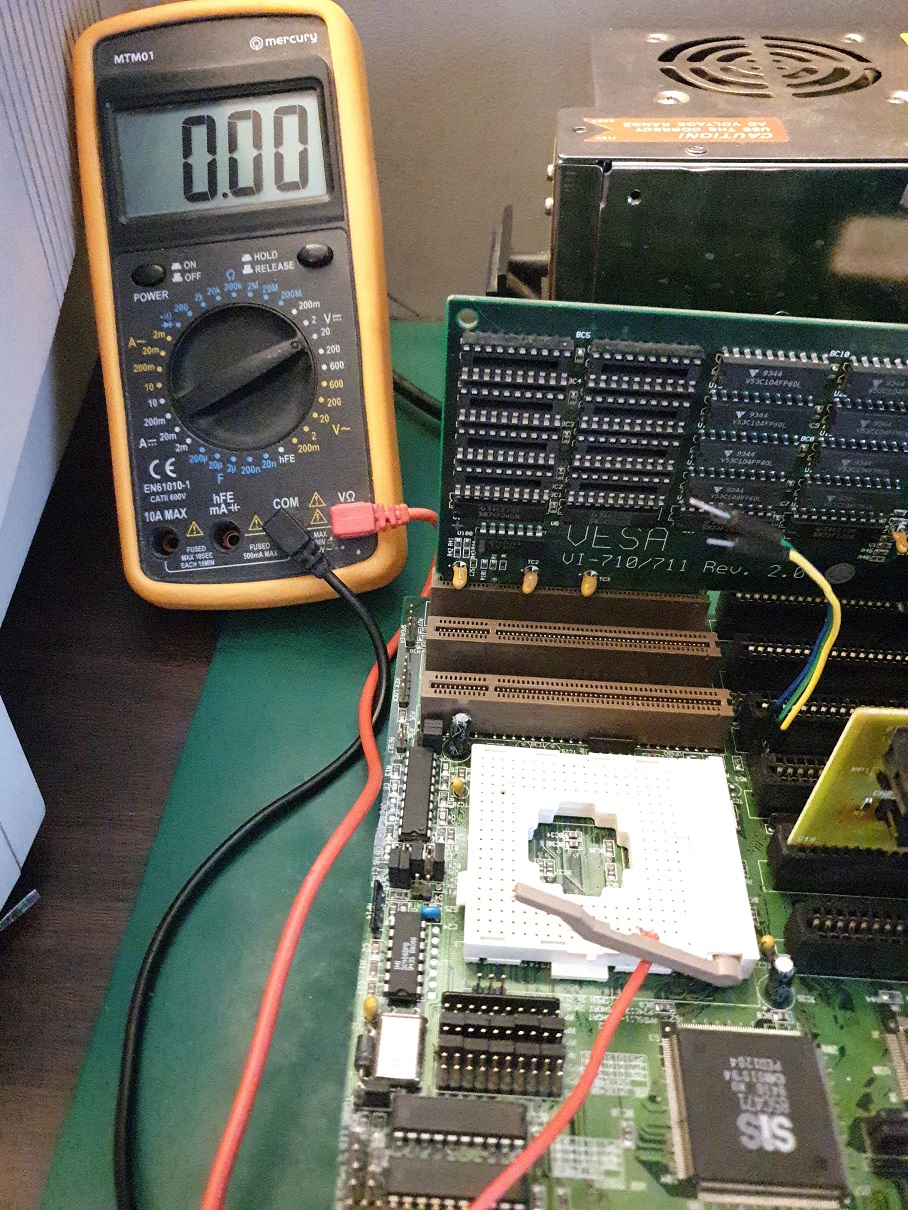
Mobo configured for 5V CPU (left) and for 3.3V CPU (right)
So we will need a 3.3V voltage regulator, and by poking around it seems pin 3 is our INPUT (5V), pin 2 is OUTPUT (3.3V) and pin 1 is GND. Something like an LM1085 will fit the bill:
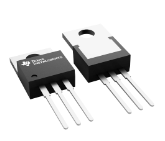
This part is on order (it cost about £1.99 delivered), and I will update this page once it arrives.
**UPDATE** So the voltage regulator has arrived!
What they actually sent me was an LM3940, which should also be fine for our purposes.